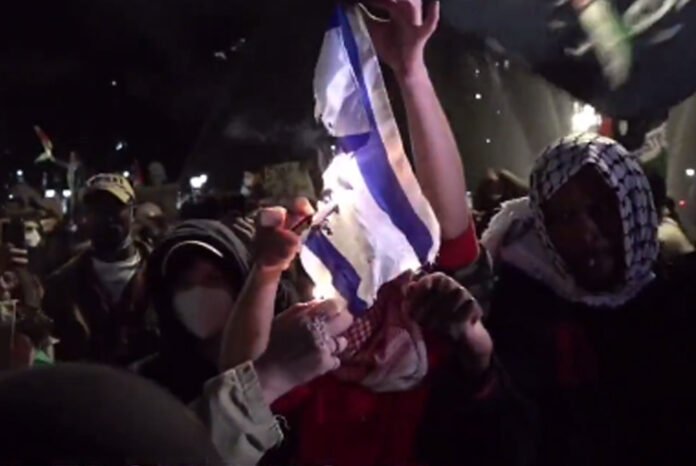There is an undeniable shift in the socio-religious landscape of New York City, with the burgeoning influence of Islam becoming increasingly noticeable. In the aftermath of the 9/11 attacks, New York City has witnessed a surprising increase in the establishment of mosques and Islamic cultural centers. The Muslim community, although only constituting less than two percent of the city’s population, has become a significant part of its vibrant multicultural fabric. This rising influence of Islam, however, brings with it a spectrum of implications. While it symbolizes religious diversity, tolerance, and multiculturalism of this iconic city, it also gives rise to a series of challenges and questions connected with societal integration, cultural harmonization, and the potential for radicalization.
Immigration has played a critical role in the increasing Muslim population in New York City. The last few decades have seen a significant influx of immigrants from predominantly Muslim countries, including Bangladesh, Pakistan, and Egypt. These immigrants, in pursuit of economic opportunities, better education, or escaping political unrest in their homelands, have chosen New York City as their new home. The city’s reputation as a cultural melting pot has made it an attractive destination for these immigrants. Over time, they have established vibrant communities, contributing to the city’s rich tapestry of cultural diversity. The increase in the number of mosques and Islamic cultural centers is a direct reflection of this growing community. Thus, immigration trends have significantly contributed to the rise of the Islamic influence in New York City.
The aftermath of the 9/11 attacks brought about unprecedented changes in the socio-religious structure of New York City. Despite the initial fear and backlash against Muslims, there has been a surprising increase in the construction of mosques and Islamic cultural centers. This surge can be attributed to a combination of factors. Firstly, the Muslim community wished to assert their peaceful presence and differentiate themselves from the violent extremists who perpetrated the attacks. Secondly, the increased scrutiny and misunderstanding of Islam post-9/11 sparked a need for more cultural and educational institutions to foster interfaith dialogue and understanding. Lastly, the growth in the Muslim population, fueled by immigration, increased the demand for such communal spaces. This post-9/11 shift reveals the resilience of the Muslim community in New York City and their commitment to fostering a peaceful coexistence.
The influence of Islamic traditions on the cultural landscape of New York City is increasingly evident. From food and fashion to art and architecture, Islamic culture is leaving its mark on the city’s diverse tapestry.
In culinary aspects, the proliferation of halal food carts and Middle Eastern restaurants across the city signifies the growing appetite for Islamic cuisine. These popular food outlets serve a variety of dishes from shawarma and falafel to biryani, introducing New Yorkers to the rich flavors of the Islamic world.
The impact of Islamic fashion is also visible, with modest fashion brands catering to Muslim women gaining popularity. Hijabs and abayas are now a common sight in the city, breaking stereotypes and providing an avenue for Muslim women to express their cultural identity while adhering to their religious beliefs.
The realm of art and literature has seen the emergence of Muslim artists and writers, their work often reflecting their experiences and perspectives as part of the Muslim diaspora. Their contributions have enriched the city’s vibrant arts scene and promoted cross-cultural understanding.
Architecturally, New York City’s skyline has been subtly reshaped by Islamic influence. The mosques and Islamic centers, built in a blend of traditional Islamic and contemporary architectural styles, add a distinct aesthetic to the cityscape.
The cultural influence extends beyond tangible aspects, too. Islamic holidays like Eid are now recognized and celebrated, fostering a sense of belonging among the Muslim community and promoting interfaith harmony.
New York City is about to erupt….
Thousand of Muslims marched on Washington Square Park in NYC, shouting the Islamic battle cry: "Allahu Akbar, Allahu Akbar, Allahu Akbar"
As you can see, after 9-11 New Yorkers responded by surrendering their city to Islam.
Of the… pic.twitter.com/TExXaXd0su
— Amy Mek (@AmyMek) October 18, 2023
Public reaction to the growing Islamic influence in New York City has been varied, ranging from acceptance and appreciation to misunderstanding and fear. On one hand, many New Yorkers have embraced this shift as a testament to the city’s multicultural spirit. They appreciate the diversity of cuisine, fashion, and art that the Muslim community contributes to the city’s vibrant cultural palette.
However, misunderstandings about the Islamic faith persist, often fueled by stereotypes and misinformation. These misconceptions can result in Islamophobia, giving rise to incidents of discrimination and hate crimes against the Muslim community. There’s a pressing need for interfaith dialogue and education to dispel these misconceptions and promote a deeper understanding of Islam and its teachings.
Fear is another reaction, particularly in the aftermath of the tragic 9/11 attacks. Some citizens associate Islam with extremism, which can lead to apprehension and resistance towards the growing Muslim presence in the city.
Yet, it’s important to note that acceptance is steadily growing. New York City’s recognition of Islamic holidays and the increasing number of Islamic cultural centers attest to this. These developments signal a progressive shift towards inclusivity, demonstrating the city’s commitment to celebrating its diverse population and fostering interfaith harmony.
Compared to New York City, the experience of Islamic integration in European cities with a significant Muslim population has varied considerably. For instance, in cities like London and Paris, the process has been quite dynamic, presenting both similarities and differences in approach.
In London, much like New York, the influence of Islam is highly visible. The city boasts numerous mosques and Islamic centers, and the celebration of Islamic holidays is widespread. There is an appreciation for Islamic culture, visible in food, fashion, and the arts. However, Islamophobia and misconceptions about the faith also persist, as they do in New York.
Paris presents a more complex picture. The city has seen a substantial rise in its Muslim population, much like New York City. However, the French principle of laïcité (secularism) sometimes comes into conflict with public expressions of Islamic identity. The city has experienced tensions over issues like the wearing of hijabs, and public reaction varies widely, from acceptance to resistance.
In both European cities, and indeed across Europe, there has been a significant effort to foster interfaith dialogue and promote integration, just as in New York City. However, the road to understanding and acceptance is a continuous journey, requiring ongoing commitment to education and dialogue.
While the integration of Islamic influence in New York City shares certain commonalities with European cities, differences in socio-cultural contexts lead to unique challenges and outcomes in each case. All these cities continue to navigate the multifaceted process of cultural integration, with the shared aim of fostering an inclusive and harmonious multicultural society.
As we look ahead, the integration of Islamic culture into the fabric of cities like New York, London, and Paris creates a promising multicultural future, yet it is not without its challenges. The trend indicates a world growing more interconnected, where cultural exchanges become commonplace and enrich our societies. However, it also highlights the need for greater multicultural understanding and acceptance.
In an era of rapid globalization, it is essential that we embrace diversity. This entails recognizing and respecting the distinct cultural identities that make up our societies, including the Islamic community. Encouraging interfaith dialogue and education is crucial to dispel misconceptions and foster a deeper understanding of Islamic culture and traditions.
Yet, acceptance and understanding should not stop at knowledge of cuisine, fashion, or art; it needs to extend to core values, beliefs, and experiences that form the essence of the Islamic culture. This inclusive approach fosters a shared sense of belonging and promotes a harmonious coexistence.
The progress we make towards multicultural acceptance and understanding today will shape the social landscape of the future. It is in our collective hands to ensure that our cities continue to be places where diversity is celebrated, not feared, and where multiculturalism is seen not as a challenge, but as an enriching facet of our shared humanity.


